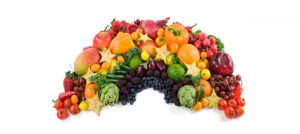If we reflect on the last 50 years of diet trends, there has always been a “bad” food of one kind or another. Whether it’s fats, carbs, animal products, salt, sugar, gluten or dairy, we’ve all been through phases where we were told a certain type of food was bad for us and we needed to avoid it.
Usually what happens is a trend becomes popular, people start hearing that they should avoid a certain type of food, then food manufacturers and marketers jump on board. They start creating foods, packaging and cookbooks to meet the market demands and fuel the fire. Social media and TV streaming services make these trends spread further and faster than ever before.
What’s wrong with sugar?

Scientific research certainly indicates that excessive sugar consumption may lead to an increased risk of type 2 diabetes, dental cavities, heart disease, certain cancers and of course all those excess calories lead to weight gain and obesity.
But the thing is – sugar is not just in those discretionary foods, sugar is also found in our fresh fruit, vegetables, dairy products – and these are foods that ARE important for our daily nutrients.
Added Sugars vs Naturally occurring Sugar
Added sugars are the simple sugars that are added into food and drinks during the manufacturing process. These can come in the form of traditional white sugar, honey, fruit juice concentrate, corn syrup and many others.
If sugar is not added, but naturally occurs in the food in it’s whole state, then it’s an intrinsic sugar. These are found naturally in fresh fruit, vegetables and milk.
The problem with “quitting sugar” is that it means you have to cut out whole food groups which contain important vitamins, minerals and nutrients. The other problem with “quitting” something is that it creates an unhealthy food relationship. Labelling a food as “bad” creates cycles of guilt, and we know that “forbidden” foods have a tendency to make us crave them and then overindulge.
What about Sugar alternatives?
Lots of people opt for honey instead of sugar. People make the mistake of thinking that honey is a “healthy” alternative to sugar, and tend to overdo it. While honey has health benefits (only in a raw, unfiltered state) like antiviral/antibacterial properties, good for immune system, gut health etc, the problem is that while honey is natural, it contains a similar amount of calories to sugar, your body processes it in the same way, the glycemic index (how fast your blood sugar spike after eating) is also similar, and it has just the same potential to cause dental issues and obesity as sugar does.
For soft drinks there are “diet” alternatives which use chemical sweeteners. While this eliminates the calories, there are other potential health implications of overconsumption of these chemicals – that’s a topic for another time!
So what do we do?
What we DO need, is to NOT continue to make 35% of our calories come from discretionary foods. We need more fruit and veg, more whole grains and more whole foods – less processed. So try to make sure that all your meals and snacks include some kind of fruit or veg, try to prepare more of your food at home rather than buy it in boxes and packets, and you can still enjoy your favourite treat foods – just do it in moderation!

